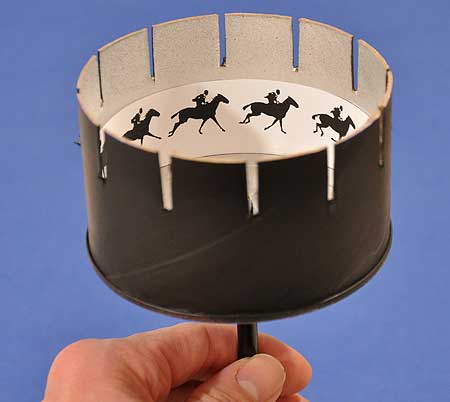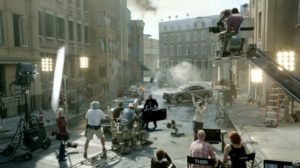Blog Post #4 EOTO Motion Pictures
The history of Motion Pictures is one of constant growth and change. Whether it's new or upgraded technology or new techniques to please the cinematic eye, motion pictures are always evolving and improving. The first moving picture was developed by William George Horner in the early 1850’s in the form of a Daedaleum. The Daedaleum was later modified, patented, and renamed to the Zoetrope in 1860. The first sequence of moving pictures were taken and assembled by Eadweard Muybridge. This process relied heavily on the visual illusion created by the zoetrope. In 1879, Muybridge and his partner Leland Stanford invented the zoogyroscope which was one of the first sequential photo projectors. Eleven years later, Thomas Edison and William Dickson announced the Kinetograph, the first motion picture camera. Shortly after, the duo released the Kinestoscope which rapidly projected the images on a screen. Two years later Edison started screening public films in Kinetograph Parlors. Not only did Edison revolutionize how motion pictures were captured but also set the precedent for how they would be shared and enjoyed.
Though the idea had passed through the brains and workshops of inventors all over the world, the reasoning and desire for motion pictures remained the same. People wanted to watch things move. At first it started with observing how animals moved for research or study. Over time the desire broadened to encompass even the most mundane things such as people eating or water leaving a hose. The now constant yearning to see new moving pictures and booming popularity left manufacturers looking for ways to improve the quality of their pictures. This meant creating new cameras that could take more photos per second and new projectors to keep up with them.
Motion pictures not only changed how we conceptualize and value our time but also created a whole new method of storytelling. Imagine that videos don’t exist. No nightly news broadcasts, no sports broadcasts, no tv series or movies, no video. All of a sudden, the fact that the Carolina Panthers are playing a home game next week just became a way bigger deal. The local public high school theater department is performing a new play and the entire town wants a ticket to see it. We so heavily rely on the convenience of video that what used to be considered a rare and exciting experience is now a, “I don’t feel like changing out of my pajamas. I’ll just catch the 4 o’clock games.”Video is regarded as one of the most relatable modes of storytelling. Narratives in the form of motion pictures combines the immersive writing and storytelling of books with the acting and physicality of live theatre then adds in its own mark with motivated camera movements, cinematic compositions, and
allowing a director to spice it up even more what whatever means are at their disposal. More modern film use audio design to subconsciously tell your brain things without you even realizing it. Dare I say that motion pictures may be the pinnacle of immersive storytelling.




Comments
Post a Comment